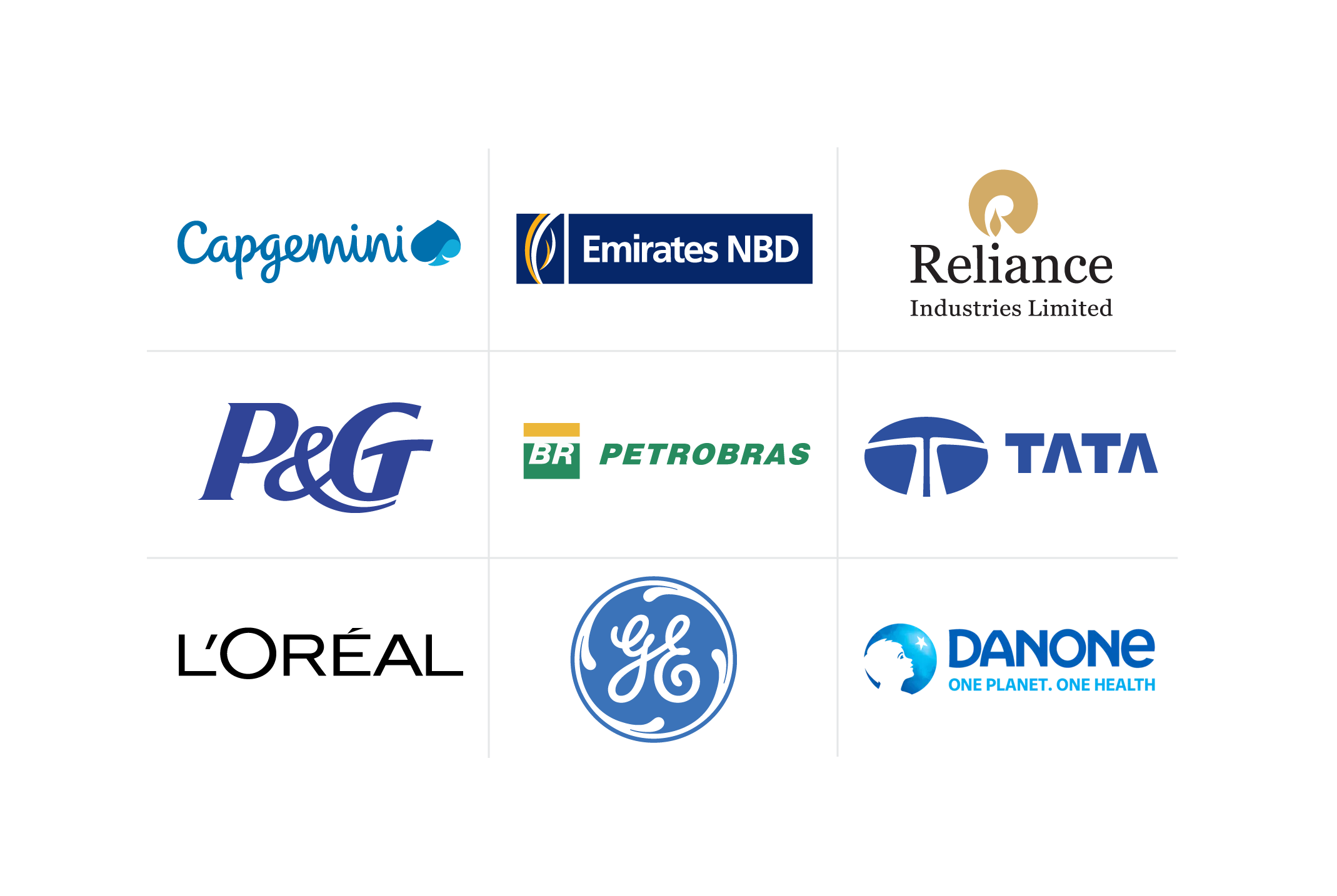Crafting an Effective Cybersecurity Strategy for Business Resilience
Learn about the importance of implementing an effective cybersecurity strategy for your business, including the various components to include in your plan, as well as incident response strategies.
![[Featured Image] A cybersecurity professional sits at his office desk with multiple computer monitors, working on a cybersecurity strategy for his organization.](https://d3njjcbhbojbot.cloudfront.net/api/utilities/v1/imageproxy/https://images.ctfassets.net/2pudprfttvy6/2YG2lKCJotbOZYliZ4OuNe/006bc9cfa1c0ae53ca867e4bc55107df/GettyImages-1442972530.jpg?w=1500&h=680&q=60&fit=fill&f=faces&fm=jpg&fl=progressive&auto=format%2Ccompress&dpr=1&w=1000)
With a cybersecurity plan in place, you can ensure you maintain the trust of investors and consumers alike, protect sensitive data, and keep your business operations flowing smoothly.
The consequences of a cyberattack on a business can manifest in several ways. The costs of recovering from an attack can be severe, leading to significant financial losses to get systems back up and running. Additionally, this downtime hurts operations, making it difficult to continue providing products and services to consumers and often dealing with data loss. Learn more about the components of a cybersecurity strategy and how you can create and maintain essential protection for your business.
Understanding the basics of cybersecurity strategy
As data and technology continue to play an increasingly significant role across all industries today, businesses are responsible for protecting sensitive information pertaining not only to their operations but also to customers' personal information and data transferred between business partners.
Cybersecurity strategy in corporate environments
An effective cybersecurity strategy looks different depending on factors such as the size of your business, the industry you're in, and the type of infrastructure in place. Considering this, certain businesses may be more susceptible to different types of cyberattacks, making it essential to tailor your cybersecurity strategy to protect against the most relevant threats. For example, in the finance sector, most data breaches occur through web application attacks, while manufacturing businesses are more likely to experience ransomware or malware attacks.
The evolving threat landscape
To adequately protect against cyberattacks, your cybersecurity strategy must consider their evolution as they become more sophisticated. Today, cybercriminals can create audio recordings and videos that appear realistic using deepfake technology and synthetic identity fraud, where attackers use both real and false information to create a fake identity. With cyberattacks evolving, your cybersecurity strategy needs to evolve as well. Implementing the latest methods, such as artificial intelligence, is essential in modern cybersecurity.
Components of a comprehensive cybersecurity strategy
A well-rounded cybersecurity strategy features several key components, including risk assessment, incident response planning, security policies and procedures, and implementation and evaluation.
Risk assessment
When developing a cybersecurity strategy, it’s beneficial to identify areas to prioritize based on the level of risk and need for improvement. By performing a risk assessment, your business can more effectively utilize resources and direct efforts toward high-risk areas. Considering the evolving landscape of cyberattacks and computer system changes, you should regularly perform risk assessments to stay protected.
During a risk assessment, you will gain valuable information, such as the type of threats you may be susceptible to, the impact of those threats, and your internal and external vulnerabilities. Consider using the National Institute of Standards and Technology (NIST) Cybersecurity Framework or the International Organization for Standardization ISO/IEC 27001:2022 standard to help conduct your risk assessment.
Incident response planning
If an attack occurs, you need a response plan that allows you to respond effectively. This leads to faster recovery from attacks while minimizing the damage they cause. To ensure effectiveness, your incident response plan should include responsibility assignments, communication strategy protocols, procedures, and testing. It’s worth testing your incident response plan once or twice throughout the year to stay updated with any necessary changes or opportunities for improvement.
Security policies and procedures
A comprehensive cybersecurity strategy needs policies and procedures that employees fully understand and follow. These policies and procedures should inform employees what safe use of technology looks like and what to do during a breach. As cyber threats increase, keeping employees updated with the latest information and potential threats is necessary. Policies that help keep your business's information secure include password-sharing restrictions, email encryption, and limitations on how employees can use company devices. It’s not enough to state these policies verbally. Document all policies and procedures and ensure everyone understands them.
Implementation and evaluation
Implementing your cybersecurity strategy requires a team consisting of members in charge of security and staying knowledgeable on the risks the business faces, as well as analysts and engineers who perform monitoring, respond to attacks, and utilize technical skills to implement security procedures. However, a cybersecurity strategy is an ongoing process that requires regular testing to evaluate its ability to keep up with current cybersecurity threats. This includes annual risk assessments.

Regulatory compliance and legal considerations
Depending on the industry of your business, you may have cybersecurity regulations to follow that regulating bodies or government authorities actively enforce. For example, the following industries are bound by various regulations:
Health care: Health Insurance Portability and Accountability (HIPAA) Act, Health Information Technology for Economic and Clinical Health (HITECH) Act
Retail: Children's Online Privacy Protection Act (COPPA), Fair and Accurate Credit Transactions Act (FACTA), California Consumer Privacy Act (CCPA)
Technology: Computer Fraud and Abuse Act (CFAA), Electronic Communications Privacy Act (ECPA)
Finance: Payment Card Industry Data Security Standard (PCI DSS), Gramm-Leach-Bliley Act (GLBA)
Proactive measures for cyber threat prevention
Go beyond defending against attacks to actively preventing them by implementing proactive measures to help identify and mitigate threats before they gain access. Penetration tests are an effective way to learn about your cybersecurity strategy and its potential weaknesses.
A penetration test is a security test in which an ethical hacker performs a simulated cyberattack to identify vulnerabilities and recommend how to fix them. Another effective way to prevent attacks is to ensure your software is up to date. Often, software updates are released specifically to address security risks, as providers add these updates to fix any weak spots in their software.
Getting started with Coursera
Developing an effective cybersecurity strategy is key to preventing a costly cyber attack. By keeping in mind your business's needs, the regulatory standards of your industry, and a clear understanding of the risks your business faces, you can help keep your information safe.
With Coursera for Business, you can train teams across your organization in the skills that matter most in today’s digital economy. Your employees will gain access to content from 350+ leading universities and industry partners, where they can build real-world experience with innovative skills, tools, and technologies while earning globally recognized credentials. Our customizable, scalable learning solutions balance workplace and technical skills training in diverse formats, from video clips to guided projects and Professional Certificates. Accelerate your digital transformation and equip employees to drive growth with Coursera.
This content has been made available for informational purposes only. Learners are advised to conduct additional research to ensure that courses and other credentials pursued meet their personal, professional, and financial goals.

